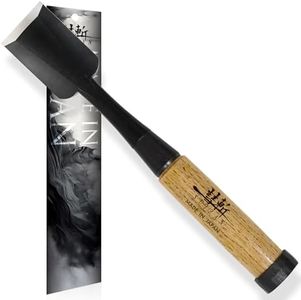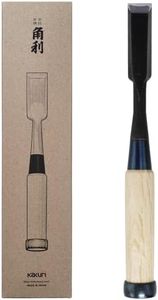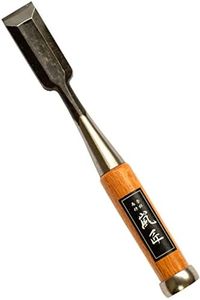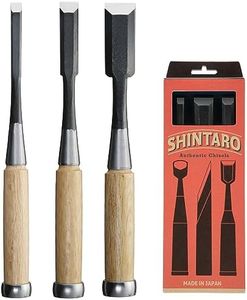We Use CookiesWe use cookies to enhance the security, performance,
functionality and for analytical and promotional activities. By continuing to browse this site you
are agreeing to our privacy policy
6 Best Japanese Chisel Sets
From leading brands and best sellers available on the web.Buying Guide for the Best Japanese Chisel Sets
Choosing a Japanese chisel set is a rewarding step for any woodworking enthusiast, whether you’re just starting out or already seasoned in the craft. Japanese chisels, known for their superb steel quality and fine craftsmanship, are celebrated for both their beauty and function. To make an informed choice, you’ll want to understand the main features that distinguish one set from another, how they align with your specific woodworking needs, and how to spot quality in areas that truly matter.Steel TypeJapanese chisels typically use a blend of hard and soft steel. The hard steel provides a long-lasting, sharp edge, while softer steel adds durability and makes sharpening easier. The quality and type of steel can broadly influence how often you need to sharpen, how easily the chisel chips, and its suitability for different woods. Softer steel is more forgiving and better if you work with a wide range of wood types, while harder steel holds a fine edge longer but is more brittle. Beginners often prefer a chisel that’s easy to sharpen, while advanced woodworkers who prize edge retention may lean toward harder steels.
Blade Widths and Set CompositionChisel sets come in different combinations of blade widths. Some include a broad range, while others offer only a few essential sizes. The widths determine what kind of joinery you can perform; wider blades are for heavy, rough work, while narrow chisels are perfect for fine, detailed joints. If you primarily do general woodworking, a set with a few mid-range sizes is a practical start. If you’re focused on fine joinery or intricate tasks, ensure your set includes narrower options—those less than 10mm. Assess the projects you plan to tackle and choose based on those needs.
Handle Material and ConstructionHandles on Japanese chisels are usually made from wood, such as Japanese oak or red oak, sometimes reinforced with metal rings to withstand hammer impacts. The handle affects comfort, grip, and longevity. Hardwoods offer excellent durability, while lighter woods may be more comfortable during long sessions. If you plan to use chisels intensively or with hammers (as in carpentry), look for reinforced handles. Those who value hand-feel and do mostly paring work by hand might prioritize comfort over toughness.
Ferrule and Hoop QualityA metal ferrule (at the blade end) and a hoop (at the handle end) help prevent splitting when striking the chisel with a hammer. Quality here means lasting performance and less maintenance. Cheaper sets may have poorly fit or weaker ferrules/hoops, which can loosen or come off over time. If you use chisels mainly for hand paring, this is less critical. For tasks requiring frequent mallet use, stronger and well-fitted ferrules and hoops become essential.
Finish and FitThe finish refers to the surface smoothness and overall build quality, while fit describes how well the blade is joined to the handle and the tightness of metal hardware. A smooth finish reduces hand fatigue and helps prevent splinters. Well-fitted components ensure the tool feels solid and reliable. If you appreciate tools that feel like an extension of your hand or plan to use chisels for many hours, prioritizing high finish and fit is wise. If you’re less concerned about aesthetics and minor comfort, a basic serviceable fit will suffice.







